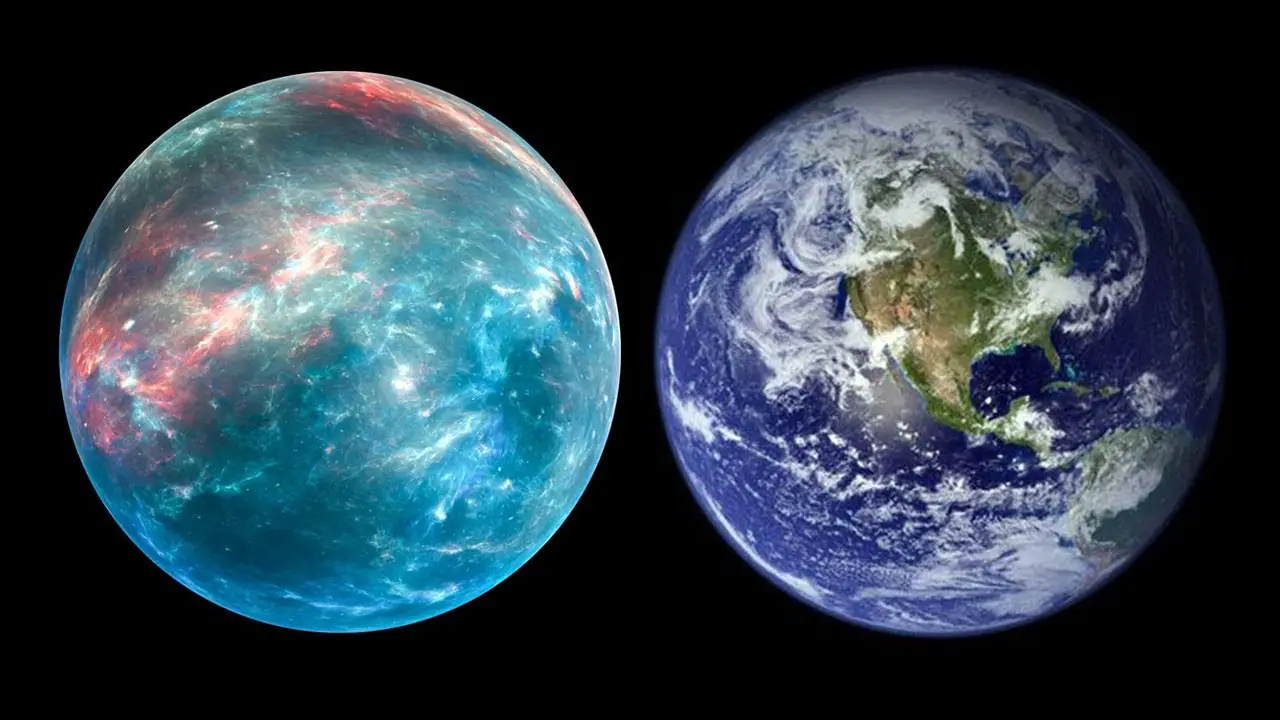Introduction
Astronomers have discovered thousands of planets beyond our solar system, and many of them share some of the same characteristics as Earth. These planets, known as exoplanets, have captured the attention of scientists and space enthusiasts alike. They are located in a variety of star systems, some of which bear striking similarities to our own.
Exoplanets are a fascinating subject of study because they provide valuable insights into the possibility of life beyond Earth. By examining their characteristics, scientists can gain a better understanding of the conditions necessary for habitability.
One key characteristic of exoplanets is their rocky composition, similar to that of Earth. This suggests the potential for solid surfaces and the presence of geological activity. Additionally, many exoplanets are located in the habitable zone of their star, meaning they are at the right distance to support liquid water on their surfaces. Water is a crucial ingredient for life as we know it, making these exoplanets even more intriguing.
Furthermore, exoplanets often share a similar size to Earth, further fueling speculation about their potential habitability. Their comparable size suggests the possibility of similar atmospheric conditions and gravitational forces.
In the following sections, we will explore some specific examples of exoplanets that exhibit these characteristics. By delving into their unique features, we can gain a deeper understanding of the potential for a “Second Earth” in the vast expanse of the universe.
Exoplanets Characteristic
Exoplanets Characteristic
Exoplanets, like Earth, exhibit several key characteristics that make them intriguing subjects of study. Firstly, exoplanets are rocky in composition, similar to our own planet. This suggests the potential for solid surfaces and geological activity, which are essential for supporting life as we know it. The presence of a solid surface allows for the formation of landmasses and the possibility of oceans or bodies of water.
Secondly, exoplanets are often located in the habitable zone of their star. This means that they are at the right distance from their star to maintain liquid water on their surfaces. Water is a crucial ingredient for life, and the presence of liquid water increases the likelihood of habitability. The habitable zone provides the necessary conditions for the existence of stable temperatures, allowing for the potential development and sustainability of life forms.
Lastly, exoplanets are typically similar in size to Earth. Their comparable size suggests the possibility of similar atmospheric conditions and gravitational forces. These factors play a significant role in determining the habitability of a planet, as they influence the retention of an atmosphere and the ability to support life.
By studying these characteristics, scientists can gain valuable insights into the potential habitability of exoplanets and the likelihood of finding a “Second Earth” in the vast expanse of the universe. Understanding these features allows us to expand our knowledge of the conditions necessary for life and the possibility of finding other habitable worlds beyond our solar system.
Example of some Exoplanets
“Example of some Exoplanets”
In addition to Proxima Centauri b, there are several other exoplanets that have captured the attention of scientists and astronomers. One such exoplanet is Kepler-452b, which is about twice the size of Earth. It orbits a star that is very similar to our sun, making it an intriguing candidate for further study. Kepler-452b is located approximately 1,400 light-years away from Earth, making it a distant but fascinating object of exploration.
Another notable exoplanet is GJ 581g, which has garnered significant interest due to its potential habitability. GJ 581g is located in the habitable zone of its star, meaning it is at the right distance to maintain liquid water on its surface. This exoplanet is approximately three times the mass of Earth and orbits a red dwarf star known as GJ 581. Its proximity to its star and potential for liquid water make it an exciting prospect for further investigation.
These examples of exoplanets highlight the diversity and potential for habitability beyond our solar system. By studying these distant worlds, scientists can gain valuable insights into the conditions necessary for life and the possibility of finding a “Second Earth” in the vast expanse of the universe. The search for exoplanets continues to expand our understanding of the cosmos and our place within it.
Proxima Centauri b:
Proxima Centauri b, an exoplanet about the same size as Earth, holds a special place in the search for habitable worlds. Orbiting the closest star to our sun, Proxima Centauri, this exoplanet is located a mere 4.2 light-years away from Earth. Its proximity makes it an enticing target for further exploration and study.
The close distance between Proxima Centauri b and Earth opens up possibilities for future missions and observations. Scientists are eager to learn more about this exoplanet’s composition, atmosphere, and potential for supporting life. Its similarity in size to Earth raises intriguing questions about its potential habitability and the presence of liquid water on its surface.
Proxima Centauri b’s orbit around its star is also of great interest. Being in the habitable zone, it receives an amount of stellar radiation that could allow for the existence of liquid water. This crucial factor, combined with its proximity to Earth, makes Proxima Centauri b a prime candidate for future missions aimed at studying its potential for hosting life.
By studying Proxima Centauri b, scientists hope to gain valuable insights into the conditions necessary for life beyond our solar system. The search for exoplanets like Proxima Centauri b brings us closer to understanding the possibilities of finding a “Second Earth” and expanding our knowledge of the universe.
GJ 581g:
GJ 581g, an exoplanet approximately three times the size of Earth, presents a unique set of characteristics that make it an intriguing subject of study. This exoplanet orbits a star that is significantly smaller than our sun and is situated approximately 20 light-years away from Earth.
The size of GJ 581g raises questions about its composition and potential habitability. Being larger than Earth, it is possible that GJ 581g has a different atmospheric composition and surface conditions. Scientists are eager to investigate whether this exoplanet possesses the necessary conditions to support life.
The star that GJ 581g orbits is also of interest. Its smaller size compared to our sun may have implications for the exoplanet’s climate and overall environment. Understanding the dynamics between the star and the exoplanet is crucial in determining the potential habitability of GJ 581g.
Studying GJ 581g provides valuable insights into the diversity of exoplanets and expands our understanding of the possibilities for life beyond our solar system. By examining the characteristics and conditions of this exoplanet, scientists can further refine their search for habitable worlds and potentially discover more “Second Earths” in the universe.
As research progresses, scientists hope to gather more data on GJ 581g’s atmosphere, surface conditions, and potential for supporting life. This knowledge will contribute to our understanding of the vast expanse of the universe and the potential for finding habitable environments beyond our own planet.
What Scientist Thinks?
What Scientist Thinks?
Scientists are actively engaged in studying these Earth-like exoplanets to determine their potential for supporting life. Although these planets share similarities with Earth, it is premature to conclude whether they can indeed sustain life. To gain a deeper understanding, scientists are employing advanced telescopes and instruments to conduct detailed investigations.
One key area of focus is the analysis of the exoplanets’ atmospheres. By studying the composition and properties of these atmospheres, scientists can gain insights into the potential habitability of these planets. They are particularly interested in identifying the presence of key elements such as oxygen, water vapor, and methane, which are crucial for supporting life as we know it.
In addition to atmospheric studies, scientists are also examining the surface conditions of these exoplanets. They are eager to determine if these planets have liquid water, a fundamental requirement for life. By studying the temperature, pressure, and geological features of these exoplanets, scientists can assess their potential habitability.
While the current knowledge about these exoplanets is limited, scientists remain optimistic about the future. They anticipate that ongoing research and technological advancements will provide more comprehensive data on these exoplanets’ atmospheres, surface conditions, and potential for supporting life. This knowledge will contribute to our understanding of the vast possibilities for life beyond Earth and guide future explorations in the search for habitable environments.
In the next section, we will draw conclusions based on the current understanding of Earth-like exoplanets and the implications for the existence of life in the universe.
Conclusion
The discovery of Earth-like exoplanets is a major breakthrough in our understanding of the universe. It suggests that there may be many other planets out there that could support life, and it raises the possibility that we are not alone in the universe.
As scientists continue to study these exoplanets and gather more data, our knowledge of their potential habitability will continue to expand. By analyzing the composition of their atmospheres and studying their surface conditions, scientists are gaining valuable insights into the conditions necessary for life to exist.
While it is still too early to draw definitive conclusions about the existence of life on these exoplanets, the findings so far are promising. The presence of key elements such as oxygen, water vapor, and methane in their atmospheres indicates that the conditions for life as we know it may be present.
Furthermore, the discovery of exoplanets in the habitable zone of their star, where liquid water could exist, further supports the idea that life may be possible on these distant worlds.
In conclusion, the discovery of Earth-like exoplanets has opened up a new realm of possibilities in our search for life beyond Earth. While there is still much to learn and explore, the potential for finding habitable environments and even signs of extraterrestrial life is an exciting prospect. Continued research and technological advancements will undoubtedly bring us closer to answering the age-old question: are we alone in the universe?

